Disclaimer: This blog post contains affiliate links. If you make a purchase through these links, I may earn a small commission at no additional cost to you. Learn More. Thank you for supporting our garden community.
Planting Bare Root Raspberries in Spring
Bare root raspberries are an excellent choice for home gardeners who want to establish a productive berry patch. They are easy to plant, cost-effective, and quickly adapt to their new environment. In this guide, you’ll learn everything you need to know about planting bare root raspberries, from selecting the best varieties to long-term care.
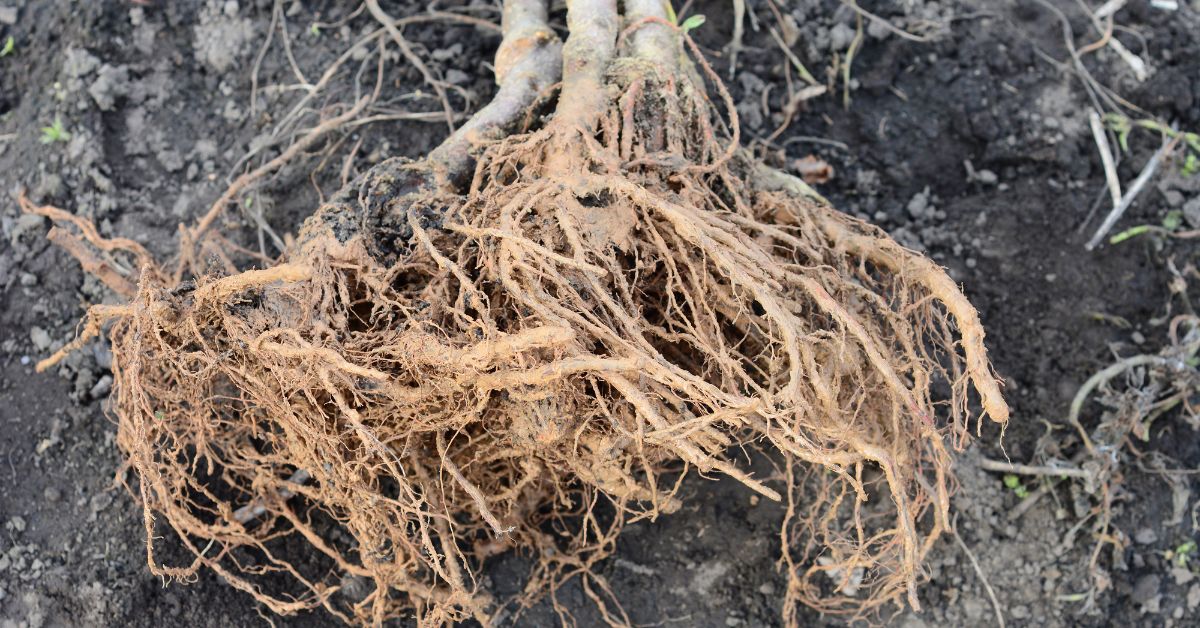
Planting Bare Root Raspberries
I love growing raspberries, and other fruit trees, from bare root plants. In my opinion, they are so much better than potted plants and perform much better.
In my garden, I have planted bare root apples, raspberries, blackberries, and kiwis. They grow so well here and give me lots of fruit every year.
And they survive the winters of course, which I think is a common misconception. Yes, the roots are exposed. No, they won’t freeze and die!
So let’s get right into planting bare root raspberries in spring.
Products:
To buy high-quality garden seeds, check out Burpee.
For a wide selection of perennial garden plants, check out Nature Hills Nursery.
For gardening equipment, check out Bootstrap Farmer.
What are Bare Root Raspberries? (Bare Root vs Potted Raspberries)
Bare root raspberries are raspberry plants that are sold without soil. So the roots are bare, there are no leaves, and the plants are dormant.
They are typically sold in winter and planted early in the spring.
In contrast, potted plants are sold in pots with soil while they are actively growing. They are sold at any time in the spring or summer and can be planted anytime before fall.
Why are Bare Root Raspberries Better?
Here are a few reasons why I think bare root raspberries are better than potted plants:
- Cost-Effective: Because bare root plants are sold when they are dormant, they are cheaper than potted plants. So if you’re planting an entire orchard, then it will cost far less to buy bare root plants.
- They Establish Quicker: Bare root raspberries are not limited to grow in a pot. This means that the roots can spread out more effectively in your garden. This will lead to a healthy and more established plant quicker into its life.
- Greater Variety: At nurseries, they typically only have a few raspberry varieties, and they’re all potted plants. But you can get bare root plants online, which means there are way more raspberry varieties for you to choose from. For example, Burpee has 19 raspberry varieties available online.
- Easier Storage: If you’re not planting your raspberries right away, or you don’t know where you want to put them, then you have to store them somewhere. It’ll be hard to store 10 potted raspberries, but it’s really easy to store 10 bare root raspberries.
This is why I like to plant bare root raspberries in my garden, as opposed to potted raspberry plants.
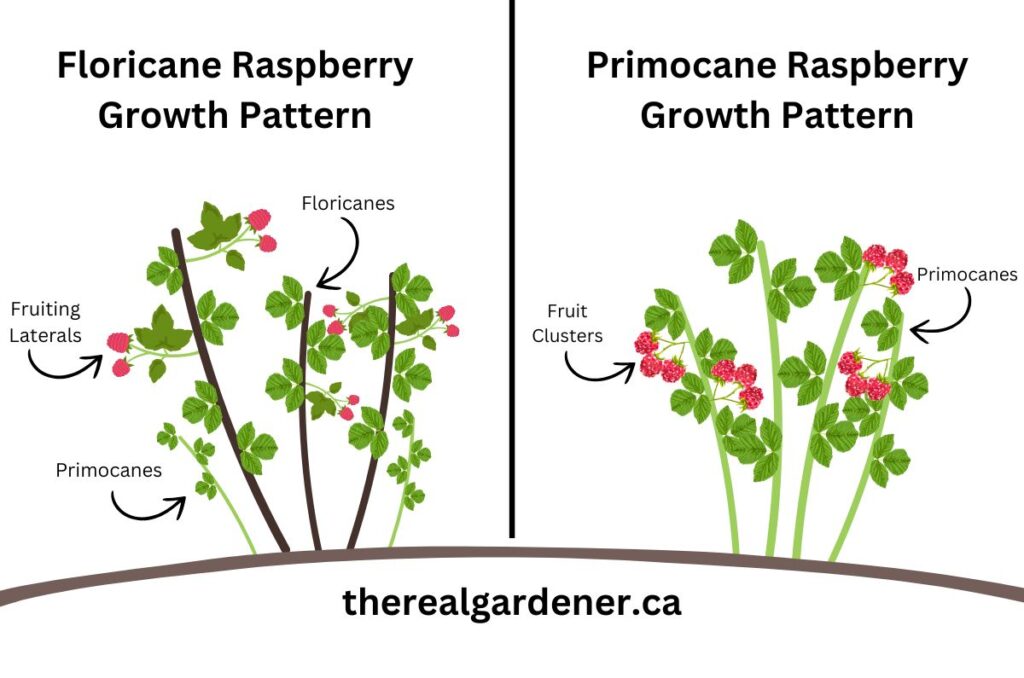
Choosing the Right Raspberry Variety
There are 2 main categories of raspberry varieties:
- Primocanes: These are varieties that produce fruit on 1 year old branches. This means that the branches that grow this year will produce fruit. They generally also produce fruit from late summer until the first frost in the fall, which is a longer harvesting period. Additionally, they are much easier to prune because you can just cut all the canes down in the fall and the new ones in the spring will produce fruit again.
- Floricanes: These varieties produce fruit on 2 year old branches. So this means that they will grow for one year without fruit, then produce fruit the next year on that same branch. The fruit generally ripens over the period of a month in the summer. Here in Ontario, it’s usually around July. Floricanes are a little bit more difficult to prune, as you have to recognize the 1 year and 2 year canes and prune selectively.
If you’re deciding on which raspberry variety to choose, then it should reflect how you want to use the fruit.
To give an example, do you want to eat the berries fresh, or do you want to make preserves?
For fresh berries, primocane varieties are better because they produce fruit over a longer period. For jams and other preserves, floricanes give you one huge flush of berries, which is perfect to can them all.
Personally, I grow primocane varieties. I like them better for fresh eating and they’re easier to prune. The variety I grow here is called pathfinder.
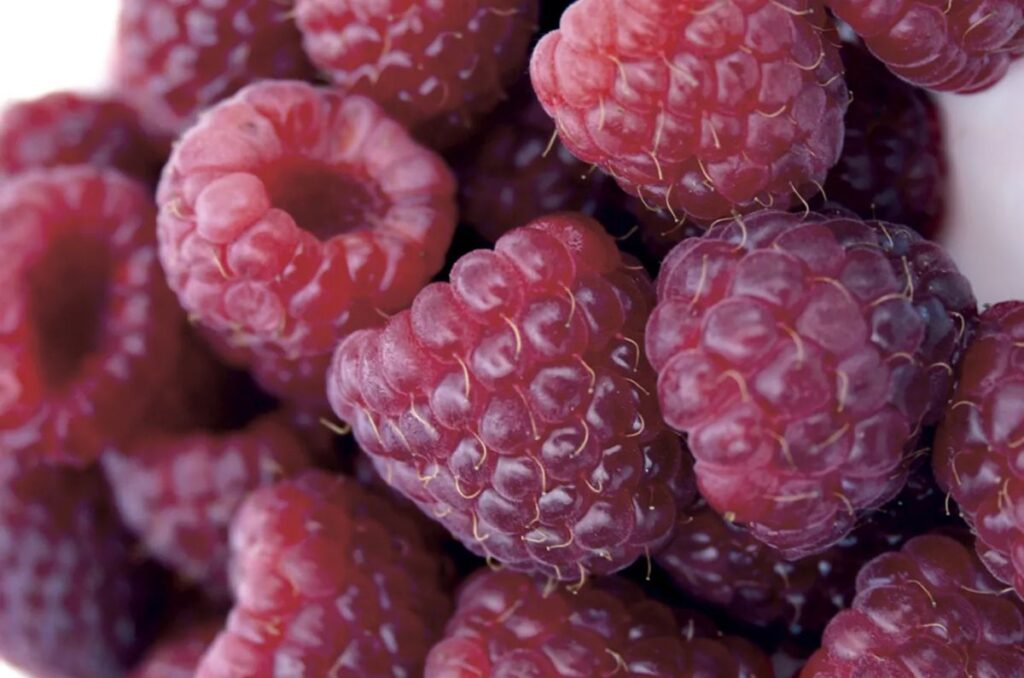
Here are some of my other favourite raspberry varieties:
- Fall Gold: This beautiful golden primocane raspberry variety produces fruit in the fall months.
- Royalty: A purple-red floricane variety that is ideal for fresh eating and making jams.
- Crimson Giant: These very large primocane berries ripen from September to October.
When Should You Plant Bare Root Raspberries?
Bare root raspberries need time to establish in your soil before they can grow well. This means that spring is the ideal time to plant them in most climates.
When ordering online, bare root plants usually ship out by March or April. You should plant them as soon as the soil defrosts in early spring, which is usually right when the plants arrive.
Planting them at this time allows them to establish in your garden before the real heat comes through.
In warmer climates, you can also get away with planting bare root raspberries in fall. This gives them time to establish over the winter before spring comes.
Preparing the Soil for Growing Raspberries
A lot of raspberry growing guides will say that raspberries can only grow in sandy loam soil, but I’m not convinced that that’s true.
My raspberries are planted in a spot with pretty heavy clay soil, and it even gets waterlogged when it rains. And they don’t have any problems growing here.
That being said, raspberries are a pioneer plant, meaning they will grow in basically any soil type. And because raspberries do need lots of water and nutrients, it actually makes sense to grow them in clay soil.
Clay soil tends to hold onto water and nutrients better than sandy soil, so take that!
But we still need to amend the soil.
Like I said, raspberries appreciate lots of nutrition, so add a lot of compost or manure to the soil. I usually do about 50% compost to native soil.
This helps with the soil structure, but it also helps with fertility and moisture retention, and it adds beneficial microorganisms.
Additionally, you need to add a lot of organic fertilizer to the soil. I like to use a mix of blood meal and bone meal, but you can also use a raspberry-specific fertilizer.
Add some to the planting hole, but you don’t have to go too crazy in the first year. We’ll also cover fertilizing raspberries later in the article.
Can Raspberries Grow in Pots?
Raspberries are a great plant to grow in pots.
Because raspberries like to spread, the only way to contain them is to put them in a pot. So if you don’t want them to take over your entire garden, then you have to grow them in containers.
But you also have to water and fertilizer more often.
When the plants get really big, daily watering might be necessary in the summer when it’s really hot. And because there’s not as much space, fertilizing more often might also be necessary.
Sunlight Requirements
Raspberries are large fruiting crops, meaning they need lots of sunlight to give you a good harvest.
They need at least 6-8 hours of direct sunlight, but you should give them as much as you can. Make sure the spot you are planting them in gets enough light before actually planting them.
It’ll be pretty much impossible to move them once they are established.
Some wild and heritage raspberry varieties can tolerate some shade, but most of us are not growing those ones anyways.
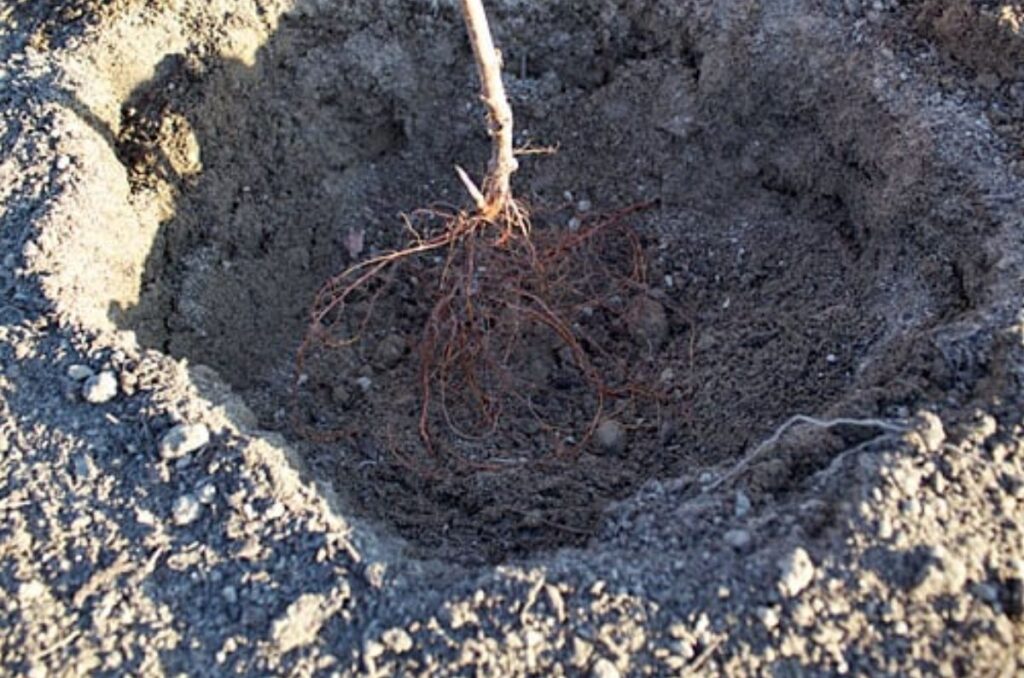
How to Plant Bare Root Raspberries
Before planting your bare root raspberries, you need to soak them in water for about 2 hours. This allows them to rehydrate before they go into your soil.
After the roots are moist, dig a hole big enough for the roots to fit in. Generally, it should be about 8 inches deep and about 12 inches wide, but nobody’s measuring anyways.
Space each bare root plant about 2-4 feet apart, depending on the variety. This gives them enough space to spread and take over the soil in between.
If for some reason you want a thicket of raspberries in less time, then you can plant them as close as you want. But, of course, you’ll need to buy more plants.
When planting, make sure the roots are fully buried but the crowns are not buried. The crown is right where the roots meet the stem. If you bury this part, the plants will rot and die.
Spread the roots out evenly in the hole to help encourage strong growth.
Backfill the hole with soil, water the plants in, and lightly press down on the soil to eliminate air pockets. You can step on the soil a little bit to help with settling it, so don’t be afraid.
Once they’re done, apply a thick layer of mulch. I like using shredded leaves or wood chips, but any organic mulch works well for raspberries.
Watering Bare Root Raspberries
When the plants are not yet established, you need to keep the soil moist. If you let it dry out, then the roots will dry out as well and the plants will die.
As the plants continue to grow over the years, they will get very large, with lots of leaves and roots. So it’s important to keep giving them lots of water, especially when it gets really hot. I recommend setting up a drip irrigation system around your raspberries to help with watering.
They need lots of water, so don’t be cheap!
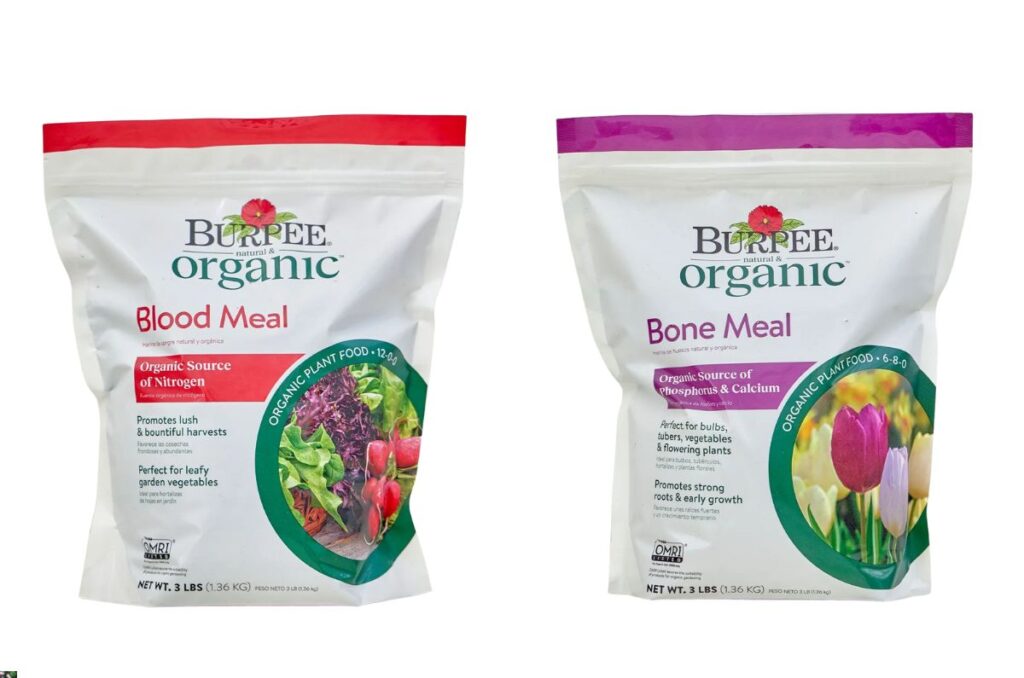
Fertilizing Raspberries
Raspberries are heavy feeders, which means they need lots of nutrients to grow well.
I like to use a mix of blood meal and bone meal when fertilizing.
Avoid using liquid fertilizers, as these typically don’t have enough nutrition to feed your berries. Additionally, they have to be continually applied throughout the growing season.
Granular fertilizers feed for longer and don’t have to be applied as often.
You don’t have to fertilize too much in the first year, but they need A LOT in the next years. As the plants get larger and produce more, they will run through fertilizer like it’s nothing.
So don’t be afraid to fertilize your raspberries heavily.
Really, don’t be afraid. If you think you put a lot, then you probably didn’t. A little dusting is not going to do anything. Pour a bunch on those plants.
I fertilize only once in spring. I sprinkle a bunch of organic fertilizer on the surface of the soil before there’s too many leaves growing.
Some gardeners also like to fertilize again as they flower and produce fruits, but I don’t think this is necessary if you give them enough in the spring.
Pruning Raspberry Plants
There is a difference for pruning primocane and floricane varieties. But generally, don’t do any pruning in the first year of growth.
But if you see any dead or damaged branches, then they should be pruned off.
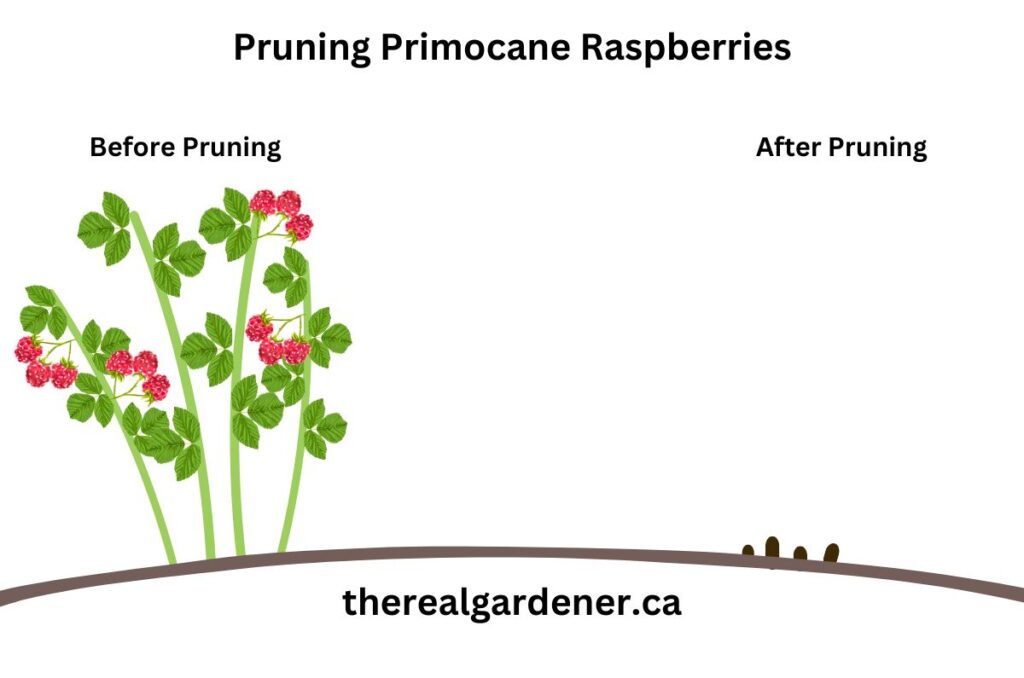
Pruning Primocane Raspberries
Primocane raspberries produce fruit on 1 year old growth. This means that the new growth of this year will produce fruit this year.
So this means we can prune back everything to the ground in the fall because they will produce new canes next year.
Don’t be afraid to do it; prune back every cane for primocane varieties right down to the ground. They can handle it and they prefer it.
Next spring, the plants will put out new fresh growth from the ground, which will produce fruit that year.
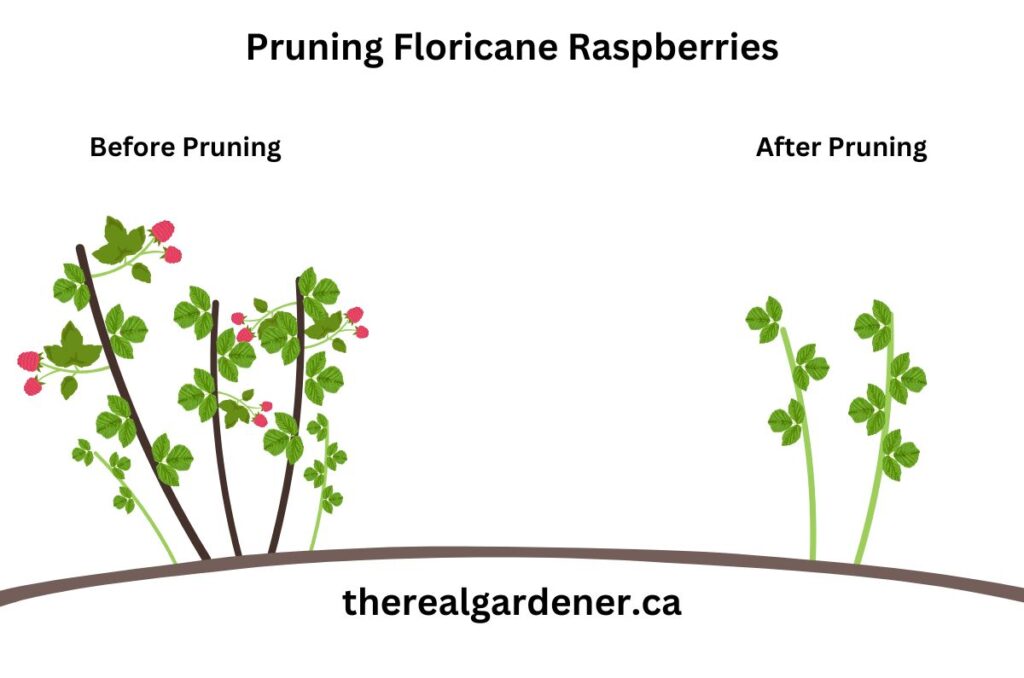
Pruning Floricane Raspberries
Floricane raspberries produce fruit on 2 year old growth. This means that the canes will grow for 1 year without fruit, and then produce fruit on those same canes next year.
So we have to be more selective when pruning floricanes, or else you won’t get a good harvest.
Pay attention to which canes produced fruit and which ones didn’t.
The ones that did produce fruit this year can be pruned off all the way to the ground. They won’t produce any more so you don’t need those.
The ones that didn’t produce fruit this year should not be pruned. Leave these canes to overwinter and they will produce fruit on those same canes next year.
Once those canes flower and produce fruit, then you can cut them back in the fall, and the cycle repeats.
So just pay attention to which canes produced fruit and which ones didn’t and you’ll be good.
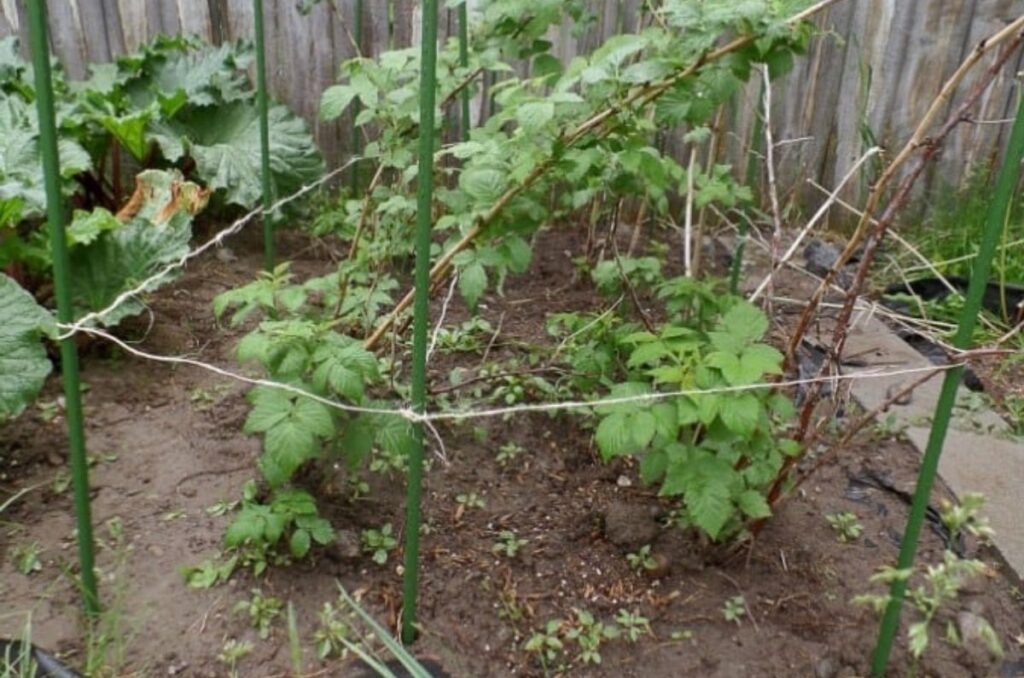
Trellising Raspberries
Raspberries don’t really need a specific trellis, but the heavy canes need to be supported as they grow.
I like to put some stakes down in the ground and tightly tie a string between them. The canes will naturally grow vertically and they will rest on the string.
Some people like using A-frames or tying each individual cane, but this really becomes a hassle as they grow over the years and produce more canes.
Harvesting Raspberries
You won’t get any fruit until the second year of growth, but they really start producing after 3-5 years.
But even in the second year, I would prune off all flowers and fruit that start to form. This will redirect the energy into producing more roots and leaves.
Primocane varieties will generally produce fruit all the way from late summer until the first frost date in the fall.
Floricane varieties produce fruit for only one month in the summer, typically around early or mid summer. Here in Southern Ontario, floricane raspberries fruit around July.
You’ll know when the fruits are ripe because they’ve reached their full colour. They should be fully red; don’t harvest them if they are still white.
Gently grab the berries and just give them a little tug. Be careful not to damage the berries.
But also be careful not to let the fruits get too ripe. So go outside every day to check for ripe berries and pick them as soon as possible.
Dealing With Raspberry Pests
As your raspberries continue growing, you may start to notice some signs of pest damage. There are at least 4 that are common in raspberries.
Aphids
I don’t really see too many aphids on my raspberry plants, but they are fairly common, especially in early spring.
They like to attack the fresh growth right when they come out of dormancy. They also like the growing tips where new leaves and flowers emerge.
You might also see them on the undersides of the leaves.
They can become a problem when they start eating the flower buds, because then you won’t get any fruit.
So the easiest way to get rid of aphids on raspberry plants is to use a castile soap spray. This soap is completely natural and won’t harm your plants, but it will dissolve the outer coating on the aphid’s body.
This causes the aphids to dry out and die.
Because the soap is natural, you can spray it all over your plants. Don’t be afraid; keep spraying until all the aphids are gone.
Japanese Beetles
Japanese beetles love chewing on my raspberry leaves. They’re active between July and August, which is the worst time because that’s when the plants are flowering and fruiting.
And trust me, they aren’t picky. They’ll eat the leaves, stems, flower buds, flowers, under ripe fruits, and ripe fruits.
But honestly, there isn’t a perfect way to prevent them from showing up. And because I have so many Japanese beetle host plants in my garden (grapes, roses, beans, raspberries), they will probably never go away.
So the only way to get rid of them is to manually remove them. I know, it’s pretty gross to touch them, but you have to.
When you pick them off, put them in a bucket of soapy water to let them drown. Discard them after they die.
A fun activity that I like to do is cut individual Japanese beetles with my pruning shears. While they’re sitting on the leaves destroying my plants, I go in to see if I can slice them perfectly in half.

Raspberry Cane Borers
Again, I haven’t noticed too many raspberry cane borers on my plants, but they are fairly common among home gardeners.
You’ll know when they’re around because you’ll see the shoots of your raspberries wilting. Additionally, there are usually 2 cut marks right below the wilted area.
If you see this, just prune off the wilted area a couple of inches below the cut marks. You can also take out the whole cane if you’re scared that they’ll spread.
But if you leave it, then the larvae will bore down the cane through the summer and fall and emerge as an adult next spring, repeating the cycle.
Fruit Flies
This might sound weird at first, but when you realize how soft and juicy raspberries are, then it makes sense.
Fruit flies, specifically the spotted wing drosophila (SWD), love to lay their eggs in ripe raspberries. The larvae hatch and start to eat the fruit from within.
There isn’t a good organic way to get rid of them, simply because there are so many of them and they reproduce so quickly.
But to prevent them from eating your raspberries, don’t let the fruit get overripe on the plant. Harvest them when they are ripe and keep harvesting every 1-2 days.
And don’t worry, if you accidentally eat a raspberry with fruit fly larvae, it won’t do any harm to you. But it’s still nasty to think about.
Anyways, it’s probably better if you didn’t know about this one… but now you do. So… enjoy!
Frequently Asked Questions
Plant them as soon as the ground can be worked in the spring. If it takes one week, two weeks, or longer, then you just have to keep them until then. Make sure they are wrapped in their original packaging and kept in a cool place, like a shed or unheated garage.
Soaking bare root raspberries allows the plants to wake up before planting them. Because they are sold dormant, if you plant them without soaking before, they may struggle to “wake up.”
Plant bare root raspberries as early as you can in the spring, usually around March or April.
Coffee grounds are a good source of organic matter. However, they won’t break down in one growing season to provide nutrients for your raspberries. Instead, put them in your compost pile.
Even More Gardening Ideas
Here are a few more posts to get the ball rolling in your garden!
- Best Fertilizer for Pepper Plants
- How to Get Rid of Aphids Naturally
- Easily Start a 5 Gallon Bucket Garden
If you liked this article, make sure to share it with your friends and family members who are also looking to sharpen their gardening skills. Also, consider signing up for our email newsletter; don’t worry, we won’t send you spam, just fresh gardening ideas every week!
If you want to learn more about vegetable gardening, check out The Real Gardener on Facebook, YouTube, and Pinterest.
Pin this post for later:
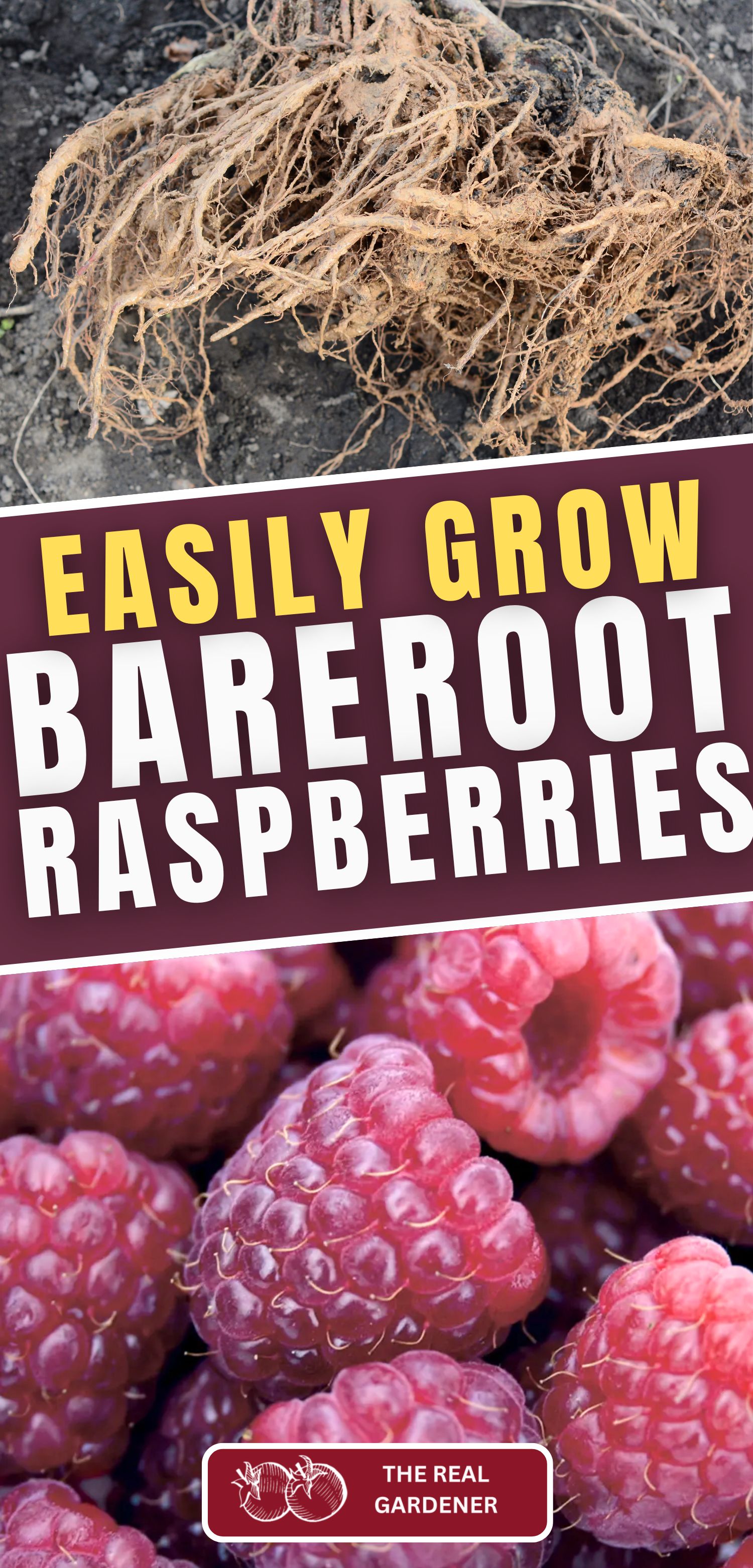
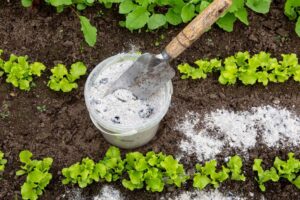

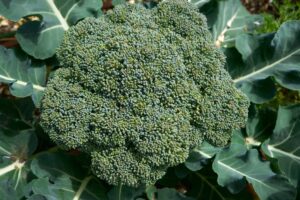
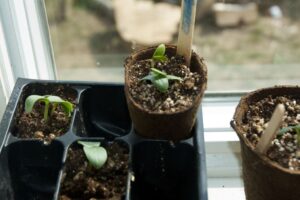
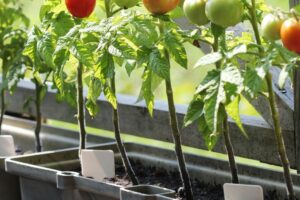

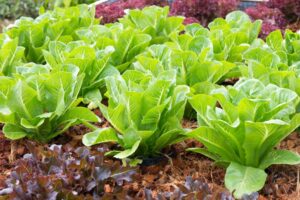
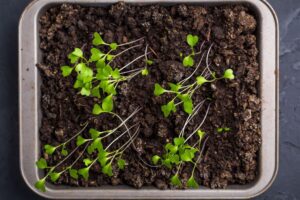
Leave a Reply